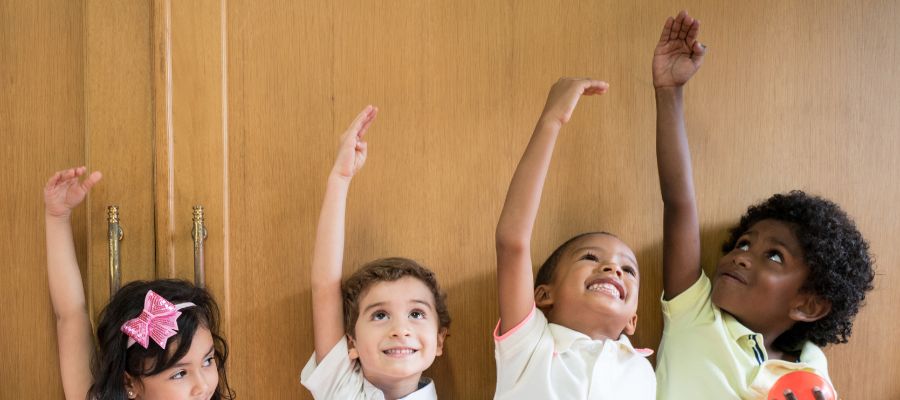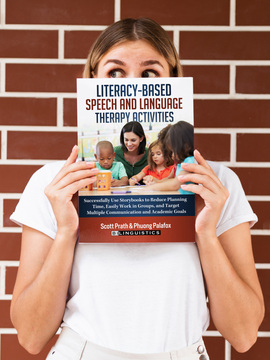I was reading an article on critical thinking skills and the author kept circling back to Venn diagrams and the power of comparisons to correctly communicate. He wasn’t taking about speech therapy. A few weeks later, in a talk about vocabulary acquisition of older students, the presenter explained that vocabulary strengthens by knowing what something is NOT. Again, not a speech pathologist. Looking into it, it struck me that while I had been guilty of relegating my speech therapy compare and contrast activities to only the youngest groups, it’s a big deal for most educators at every grade level.
And for good reason. I easily found about a dozen ways comparing and contrasting supports education and cognitive development. Let’s start with that list and then dive into what I was missing: words to use at different levels and ways to write incredible goals.
10 Ways Compare and Contrast Speech Therapy Greatly Impacts a Learner
Compare and contrast speech therapy activities can play a crucial role in learning and education as they contribute to cognitive development, critical thinking skills, and a deeper understanding of concepts.
1. Enhances Critical Thinking Skills
Comparing and contrasting requires students to analyze information, identify similarities and differences, and make connections. This promotes the development of critical thinking skills, which are essential for problem-solving and decision-making.
2. Deepens Understanding
Engaging in compare and contrast activities helps students gain a deeper understanding of the subjects they are studying. By examining the similarities and differences between different concepts or ideas, students can grasp the nuances and complexities of the material.
3. Promotes Higher Order Thinking
Compare and contrast activities go beyond simple recall of information. They encourage higher order thinking skills such as analysis, synthesis, and evaluation. Students are prompted to consider the implications and significance of the similarities and differences they identify.
4. Encourages Reflection
Through the process of comparing and contrasting, students are prompted to reflect on their own understanding and preconceptions. This self-reflection contributes to metacognition, allowing students to become more aware of their thought processes and learning strategies.
5. Facilitates Active Learning
Compare and contrast activities often involve active participation, whether through discussions, written assignments, or interactive exercises. Active engagement enhances retention and comprehension of the material.
6. Heightens Cultural Awareness
Comparing and contrasting different cultures, historical events, or perspectives can foster cultural awareness and sensitivity. Students learn to appreciate diversity and understand the complexities of various societies and worldviews.
7. Develops Effective Communication Skills
Expressing comparisons and contrasts requires clear communication. Engaging in such activities helps students develop their verbal and written communication skills, enabling them to articulate their thoughts more effectively.
8. Prepares for Real-world Decision-Making
In real-world scenarios, individuals often need to weigh options, make choices, and understand the implications of their decisions. Compare and contrast activities provide a foundation for these decision-making skills.
9. Provides Versatility Across Subjects
Compare and contrast activities can be applied to various subjects and disciplines, from literature and history to science and mathematics. This versatility makes them a valuable tool in diverse educational contexts.
10. Promotes Lifelong Learning
Developing the ability to compare and contrast information is a lifelong skill that extends beyond formal education. It equips individuals with the capacity to continue learning, adapting, and making informed decisions throughout their lives.
Compare and contrast activities are integral to fostering intellectual growth, critical thinking, and a holistic understanding of the subject matter, making them a valuable component of effective learning and education.

The Missing Component of Compare and Contrast Speech Therapy Activities
This is almost embarrassing to admit, but most of my compare and contrast speech therapy activities just jumped right in with words like “dog” and “cat.” I did a better job with older students as I leaned into books that easily addressed compare and contrast like this teacher’s list.
But I was missing the essential vocabulary. How can we expect a child to verbally describe similarities and differences without the words to do it? Your compare and contrast speech therapy activities should start with sessions teaching the needed words. Think of it as a dynamic assessment to probe how well the child can actually describe, before jumping in with word pairs.
When introducing compare and contrast concepts to kindergarten or young students, it’s helpful to use simple and concrete words. Here’s a list of compare and contrast words suitable for young learners:
Similar Words:
- Same
- Alike
- Equal
- Matching
- Twin
- Identical
Different Words:
- Different
- Unalike
- Not the same
- Unlike
- Changed
- Other
Comparison Words:
- More
- Less
- Bigger
- Smaller
- Taller
- Shorter
- Faster
- Slower
Contrast Words:
- Instead
- But
- However
- On the other hand
- Yet
- While
General Compare and Contrast Phrases:
- Compare
- Contrast
- Both… and…
- Either… or…
- Neither… nor…
- In the same way
- On the contrary
- Similar to
- Different from
- Just like
- But, on the other hand
- On the flip side
Aside from an initial dynamic assessment session, these words and phrases can be introduced gradually throughout your interactive and age-appropriate activities to help young learners grasp the concept of comparing and contrasting. Activities like sorting, matching, and simple Venn diagrams can be used to make the learning experience fun and engaging for kindergarten students.

Compare And Contrast Speech Therapy Activities by Age
Here’s where it gets interesting; how should compare and contrast speech therapy activities differ based on age? Or should they at all? Looking into the general education literature, it is clear that different things are being focused on at different ages:
Speech Therapy Compare and Contrast Words for Younger Students
Young Students = Prepositions, Adjectives, and Adverbs
Young students need the vocabulary to compare and contrast what is in front of them. While they might not have the exact name of an object, prepositions, adjectives, and adverbs are high value words that can used in any situation.
Compare and Contrast Wordlist for Younger Students
- Sun and Moon
- Day and Night
- Big and Small
- Tall and Short
- Hot and Cold
- Wet and Dry
- Happy and Sad
- Loud and Quiet
- Light and Dark
- Up and Down
- In and Out
- Open and Close
- Hard and Soft
- Heavy and Light
- Long and Short
- Old and Young
- Empty and Full
- Fast and Slow
- Clean and Dirty
- Near and Far
- Above and Below
- Left and Right
- Day and Evening
Speech Therapy Compare and Contrast Words for Older Students
Grade-School Students = Appropriately Difficult Vocabulary
This is where the words come in but the lists of words I found for educators where much more difficult than most of the compare and contrast word lists for speech therapy that I found. Yes, some children struggle with vocabulary. But I think the point here is that the words are meant to cause a struggle that leads to circumlocution and explanation rather than single word answers.
Compare and Contrast Wordlist for Older Students
- Amazon Prime and Disney plus
- Bats and birds
- Bike and car
- Bird and butterfly
- Books and movies
- Breakfast and dinner
- Cable and Netflix
- Cake and muffin
- Carrot and pumpkin
- Childhood and adulthood
- Chocolate bar and ice cream
- Comedy and drama
- DC or Marvel
- Dogs and cats
- Email and traditional mail
- Fast food and home cooking
- Football and basketball
- Friends and family
- Harry Potter and Draco Malfoy
- iPhone and Android
- Iron Man and Hulk (or any two superheroes)
- Lollipops and popsicles
- Mars and Earth
- Milkshake and smoothie
- Pasta and pizza
- Salt and sugar
- Shark and whale
- Snake and eel
- Soccer and football
- Spring and fall
- Teacher and doctor
- Vegetables and fruits
- Video games and movies
- Virtual school and in-person school
- Werewolves and vampires
Speech Therapy Compare and Contrast Words for Highschool Students
High school Students = Essays
The name of the game in high school is essay writing. I am not going to provide too long of an explanation here because most of the high schoolers we work with might benefit from the activities above based on the level they are at. But we do have high schoolers with pragmatic and voice disorders that can benefit from us focusing on something that will really help them in all their other classes.
So even without writing or by using their homework we can focus on comparing and contrasting in some really unique ways.
Compare and Contrast Essay Ideas for High School Students
- Compare and contrast the advantages and disadvantages of living in the city versus the suburbs.
- Analyze the similarities and differences between traditional education and online learning.
- Compare and contrast two different novels or books with a similar theme.
- Examine the similarities and differences between high school and college life.
- Compare and contrast the effects of fast food and home-cooked meals on health.
- Analyze the similarities and differences between two historical periods or events.
- Compare and contrast the portrayal of gender roles in two different films or TV shows.
- Examine the similarities and differences between two different styles of music.
- Compare and contrast the environmental impact of electric cars versus traditional gasoline-powered cars.
- Analyze the similarities and differences between traditional and digital forms of communication.
- Compare and contrast the economic systems of two different countries.
- Examine the similarities and differences between two political leaders or movements.
- Compare and contrast the themes and characters in two Shakespearean plays.
- Analyze the similarities and differences between two different sports.
- Compare and contrast the impact of social media on personal relationships and face-to-face communication.
- Examine the similarities and differences between two works of art or literature from different time periods.
- Compare and contrast the role of government in two different political systems.
- Analyze the similarities and differences between two different scientific theories or discoveries.
- Compare and contrast the portrayal of family dynamics in two different TV series.
- Examine the similarities and differences between two different technological advancements.
Compare and Contrast Speech Therapy Goals
Looking at the suggestions above do you see how our compare and contrast speech therapy goals many need to change? That, or at least they need to be expanded to be more culturally, grade, or educationally relevant. Here are some great goals that we sourced to use on our caseloads and in our clinic. They made a nice addition to our Speech Therapy Goal Bank to boot!
Object Identification:
Goal: Will identify similarities and differences between objects in a given set.
Example: Given a set of pictures, the client will verbally express at least three similarities and three differences between two objects.
Vocabulary Expansion:
Goal: Will expand their vocabulary by learning and using words related to comparing and contrasting.
Example: The client will use comparative and superlative adjectives (e.g., bigger, smaller, taller) in sentences to describe objects and actions.
Descriptive Language:
Goal: Will improve descriptive language skills by comparing and contrasting attributes of objects.
Example: Given an object, the client will describe its color, size, shape, and texture, comparing and contrasting it with another object.
Sentence Structure:
Goal: Will improve sentence structure by creating grammatically correct sentences to compare and contrast.
Example: The client will construct sentences using appropriate sentence structures (e.g., “This is [object], and it is [adjective]. In contrast, [other object] is [adjective].”).
Storytelling:
Goal: Will develop storytelling skills by comparing and contrasting characters, settings, or events in a narrative.
Example: The client will retell a story, highlighting at least three similarities and three differences between characters, settings, or events.
Categorization:
Goal: Will categorize and classify items based on similarities and differences.
Example: Given a set of objects, the client will categorize them into groups, explaining the similarities that justify their grouping.
Critical Thinking:
Goal: Will enhance critical thinking skills by analyzing and justifying comparisons and contrasts.
Example: The client will discuss and defend their opinions by providing evidence to support their comparisons and contrasts.
Listening and Comprehension:
Goal: Will improve listening and comprehension skills by identifying similarities and differences in spoken instructions or stories.
Example: The client will listen to a short story or set of instructions and verbally identify at least two similarities and two differences.
Social Communication:
Goal: Will improve social communication by engaging in conversations that involve comparing and contrasting ideas or experiences.
Example: The client will participate in a group discussion, comparing and contrasting their weekend activities with a peer.
Perspective-Taking:
Goal: Will develop perspective-taking skills by considering different viewpoints in a given scenario.
Example: The client will discuss a situation from multiple perspectives, identifying similarities and differences in the viewpoints expressed.
Remember to tailor these goals to the specific needs and abilities of the individual receiving speech therapy. Regular assessments and adjustments can help track progress and ensure that the goals remain challenging yet achievable.





This is a wonderful resource! Thanks for sharing.
I really appreciate this resource. Well organized and helpful.